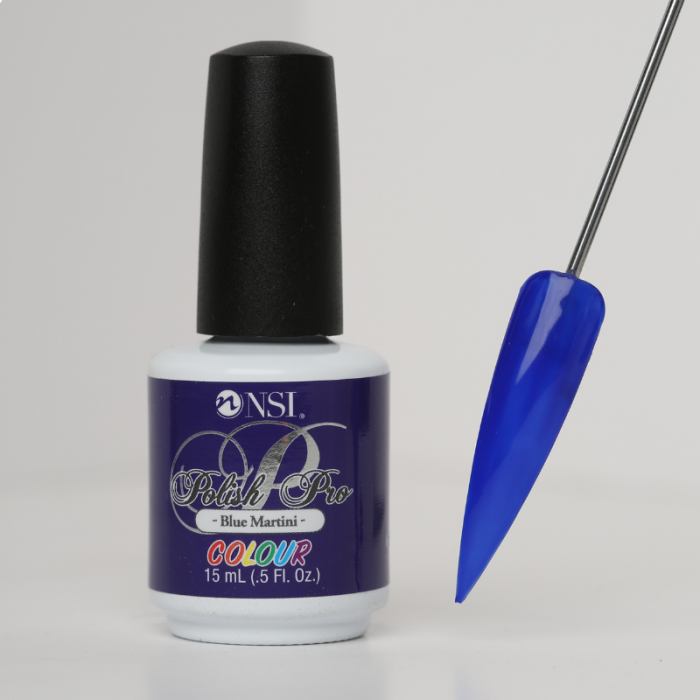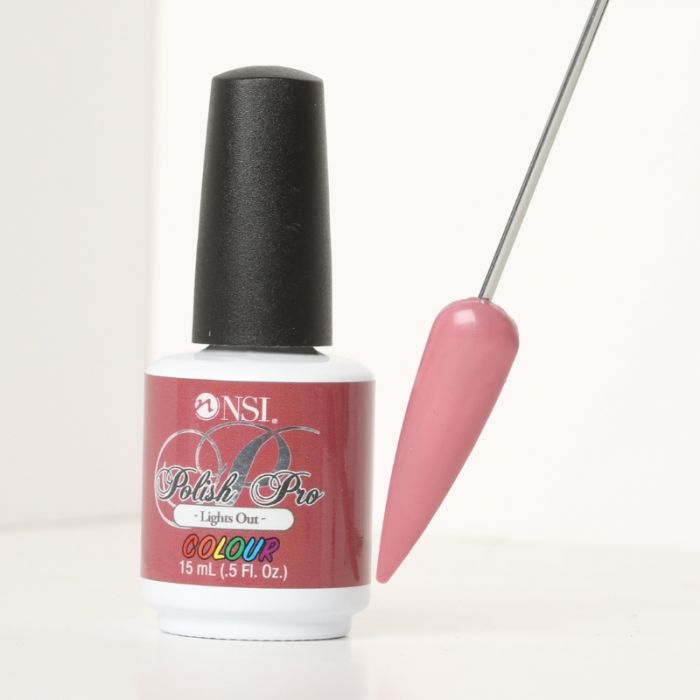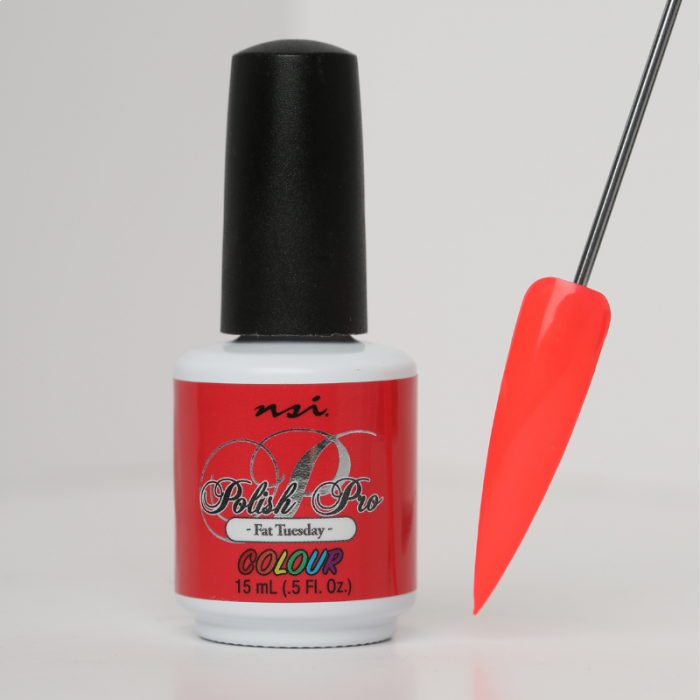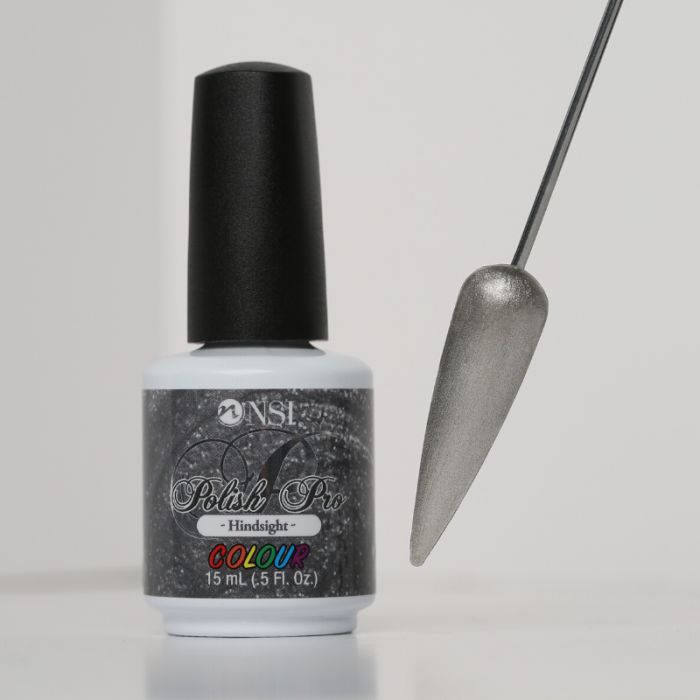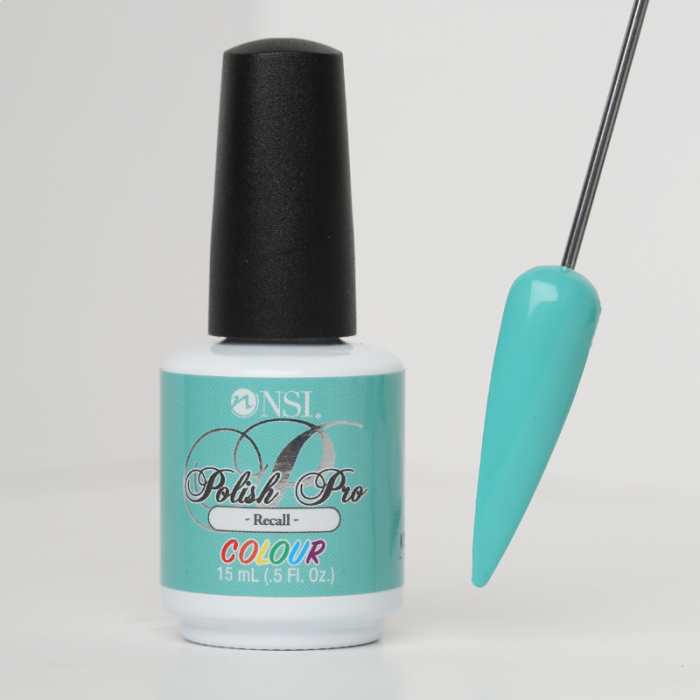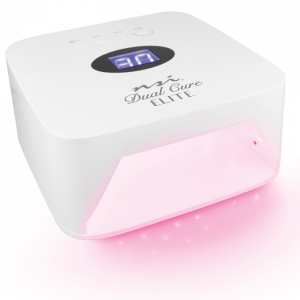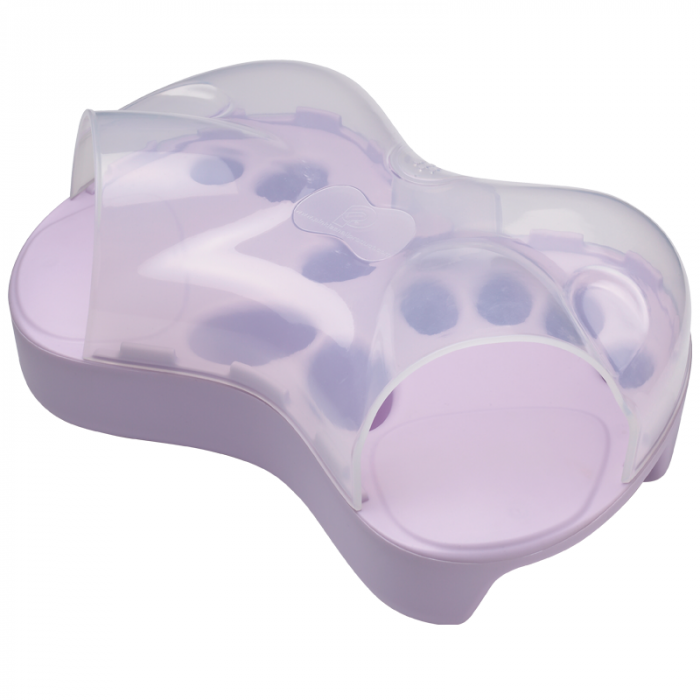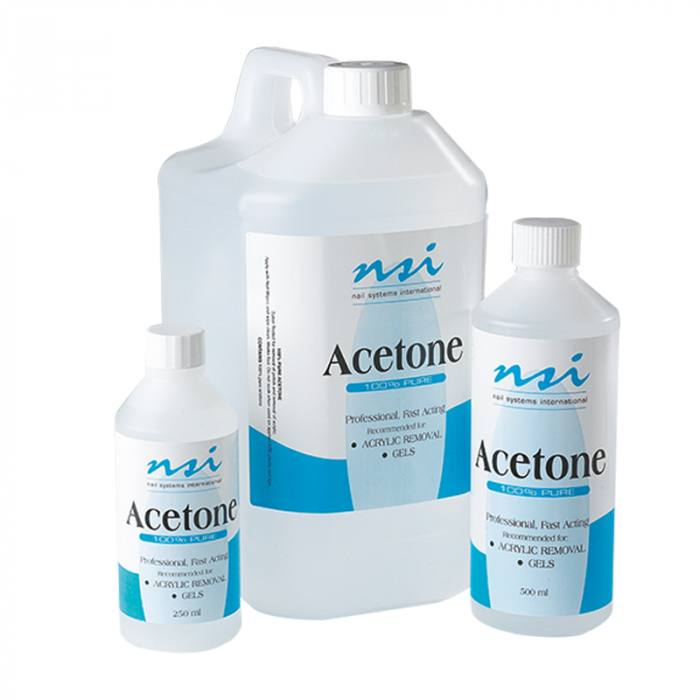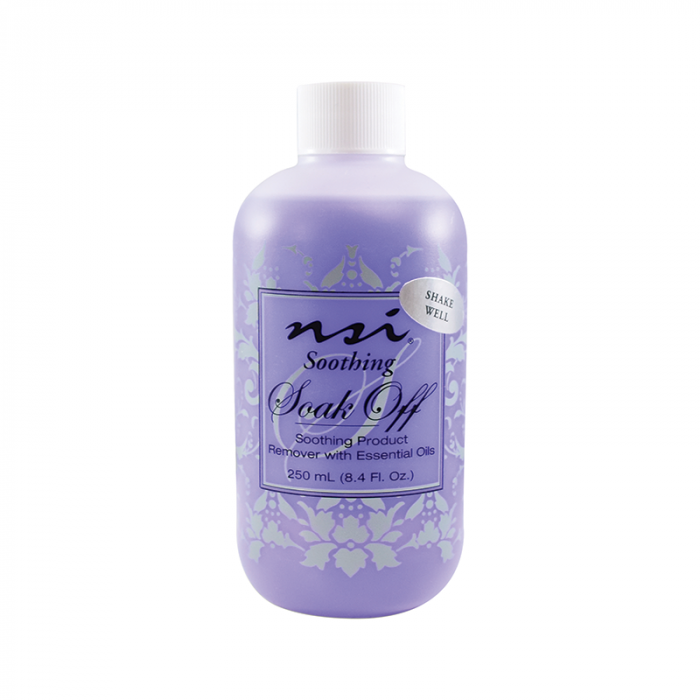We use cookies to make your experience better. To comply with the new e-Privacy directive, we need to ask for your consent to set the cookies. Learn more.
What are Gel Nails?
In the bustling world of nail salons and the beauty industry, gel nails have carved a niche for themselves, becoming a favourite for many. But have you ever paused to ponder the science that grants them their glossy finish and impressive longevity? Beyond the vibrant hues and the shine lies a fascinating realm of chemistry and innovation. From the intricate dance of molecules under UV light to the artistry of application, there's a depth to gel nails that goes beyond the surface. As we delve deeper, you'll uncover the secrets behind their durability, the nuances of their formulation, and the future trends shaping this beauty staple.
What are Gel Nails?
Gel nails have revolutionised the world of manicures, offering a longer-lasting and shinier finish than traditional nail polishes. But what exactly are gel nails, and why have they become the go-to choice for many?
History of Gel Nails
The concept of gel nails isn't entirely new. While traditional nail polishes have been around for decades, the quest for a longer-lasting manicure led to the development of gel nail technology. Unlike regular nail polish that dries naturally, gel nail polish requires curing under a UV or LED light. This curing process not only ensures the polish sets firmly on the nail but also contributes to its longevity and glossy finish. Over the years, gel manicures have gained immense popularity, becoming a staple in many nail salons worldwide. Their rise can be attributed to their durability and the convenience they offer, especially for those with busy lifestyles. After all, who wouldn't want a manicure that remains chip-free and glossy for weeks?
Benefits of Gel Nails
Gel nails come with a plethora of benefits that make them a preferred choice for many:
- Long-Lasting: One of the primary advantages of gel nails is their longevity. Thanks to the curing process, gel manicures can last anywhere from 10 days to up to three weeks. This means less frequent trips to the nail salon and more time enjoying a perfect manicure.
- Glossy Finish: Gel manicures are renowned for their high-shine finish. Unlike traditional polishes that can lose their lustre after a few days, gel nails maintain their glossiness throughout the duration of the manicure.
- Chip-Resistant: We've all experienced the frustration of chipping a freshly painted nail. Gel nails, however, offer superior resistance to chips and wear and tear. This resilience is particularly beneficial for those who use their hands frequently in daily tasks or professions.
- Quick Drying Time: With gel manicures, there's no need to wait around for your nails to dry or worry about smudging them. Once the polish is cured under the UV or LED light, it's set in place, allowing you to go about your day without any waiting time.
- Versatility in Design: Gel nail polishes come in a myriad of colours and finishes. Whether you prefer a classic nude shade, a glittery finish, or intricate nail art, gel nails offer the flexibility to achieve any look you desire.
The Chemistry of Gel Nails
Diving into the world of manicures, gel nails stand out as a modern marvel. Their resilience, shine, and longevity are not just a result of beauty techniques but are deeply rooted in chemistry. Let's delve into the science behind these popular manicures.
Basic Components of Gel Nail Formulations
Unlike conventional nail polishes that primarily consist of nitrocellulose and pigments dissolved in volatile organic solvents, gel nail polishes have a different composition. The primary components of gel nail polishes include:
- Methacrylates: These are the building blocks of the polymer in gel nail polishes. They are present in a dissolved form and are responsible for forming the long-lasting, hard layer on the nail when cured.
- Photoinitiators: These are crucial molecules that initiate a chemical reaction upon absorbing light at specific wavelengths. In the case of gel nails, they initiate the polymerization reaction when exposed to UV or LED light. A common photoinitiator used in gel nail polishes is benzoyl peroxide.
- Pigments: Just like in conventional nail polishes, pigments in gel nail polishes give them their vibrant colours. These can be organic pigments or inorganic minerals.
- Stabilizers: These are added to ensure the longevity of the polish's colour and to prevent it from fading when exposed to sunlight.
Polymerization Process
The magic of gel nails lies in the polymerization process. Unlike conventional nail polishes that dry by evaporation of solvents, gel nail polishes harden or "cure" through a chemical process called polymerization. When gel nail polish is exposed to UV or LED light, the photoinitiators within the polish absorb this light and initiate a reaction. This reaction causes the methacrylates to link together, forming long polymer chains that harden on the nail. This process is what gives gel nails their durability and longevity.
Role of Photoinitiators
Photoinitiators are the unsung heroes in the world of gel nails. These molecules, when exposed to UV or LED light, break down into active molecules known as free radicals. These free radicals then trigger the polymerization reaction, allowing the dissolved components in the gel nail polish to form a stiff and shiny layer on the nail. Without photoinitiators, gel nail polish would remain in its liquid form and would not harden, regardless of the exposure to UV or LED light.
Chemical Bonds in Gel Nails
The strength and durability of gel nails come from the type of chemical bonds formed during the curing process. As the polymerization reaction proceeds, covalent bonds are formed between the methacrylate molecules, leading to a cross-linked structure. This cross-linking between polymer chains is what gives gel nails their resilience and resistance to chipping.
The Science Behind Color and Shine
The vibrant colours and high shine of gel nails are a result of the specific pigments and stabilizers used in their formulation. Organic pigments and inorganic minerals, such as chromium oxides (green) and iron oxides (red), give the polish its colour. Additionally, the refractive index of the polish, influenced by its chemical composition, contributes to its glossy finish.
Removal Process at the Molecular Level
Removing gel nail polish is more challenging than its conventional counterpart. The strong covalent bonds formed during the curing process make the polish resistant to regular nail polish removers. To dissolve the polymer, a prolonged soaking in acetone is required. Acetone works by breaking down the polymer chains, making it easier to remove the polish. However, this process can be slower than removing conventional nail polish due to the gel's lower solubility in acetone.
Potential Chemical Reactions with the Natural Nail
While gel nails offer numerous benefits, it's essential to be aware of potential chemical interactions between the gel polish and the natural nail. The natural nail is primarily made of keratin, a protein. Prolonged use of gel nail polishes can affect the hydration levels of the nail plate, potentially leading to brittleness and weakening. It's crucial to give nails a break between gel manicures and ensure proper nail care to maintain their health.
How Gel Nails Work
The allure of gel nails isn't just in their glossy finish or their longevity, but in the intricate science that goes behind their application and curing. Let's delve deeper into the mechanism that makes gel nails a favourite in the beauty industry.
Application Process
The application of gel nails is a meticulous process that ensures the longevity and shine of the manicure. Here's a step-by-step breakdown:
- Preparation: Before any product is applied, the natural nail is cleaned, buffed, and shaped. This ensures a smooth surface for the gel polish to adhere to.
- Base Coat: A thin layer of base coat is applied to the nail. This acts as a primer, ensuring the colour coat adheres properly and lasts longer. It also prevents any potential staining of the natural nail.
- Colour Coat: Depending on the desired opacity, one to three layers of the colour coat are applied. Each layer is thin to ensure even curing and to prevent any bubbles or wrinkles in the polish.
- UV/LED Curing: After each coat, the nails are placed under a UV or LED lamp. This step is crucial as the light from the lamp activates the photoinitiators in the gel polish, leading to the polymerization process, which hardens the polish.
- Top Coat: Once the desired colour opacity is achieved, a top coat is applied. This gives the nails their signature glossy finish and acts as a protective layer against chips and scratches.

Nails by Jenny Louise Pinky's Nails and Beauty
Curing Mechanism
The curing of gel nails is a fascinating interplay of chemistry and technology. When gel polish is exposed to UV or LED light, the photoinitiators in the polish absorb this light and break down into smaller molecules. These molecules then initiate a chain reaction, leading to the formation of polymer chains. This process, known as polymerization, transforms the liquid gel polish into a solid, hard layer on the nail.
Role of Photoinitiators
Photoinitiators play a pivotal role in the curing of gel nails. These chemicals absorb UV or LED light and produce free radicals. These free radicals then initiate the polymerization of the gel polish. Without photoinitiators, the polymerization process wouldn't start, and the gel polish would remain liquid.
Chemical Bonds in Gel Nails
The strength of gel nails comes from the chemical bonds formed during the curing process. As the gel polish polymerizes, covalent bonds are formed between the molecules, creating a cross-linked network. This network gives gel nails their durability and resistance to chipping.
The Science Behind Colour and Shine
The vibrant hues and high shine of gel nails are a result of the pigments and the refractive index of the polish. The pigments absorb certain wavelengths of light and reflect others, giving the polish its colour. The refractive index, on the other hand, determines how light interacts with the polish, contributing to its shine.
Removal Process at the Molecular Level
Removing gel nails requires breaking the strong covalent bonds formed during the curing process. Acetone, a powerful solvent, is used to break down these bonds. When nails are soaked in acetone, the solvent molecules penetrate the gel polish, breaking the polymer chains and dissolving the polish.
Potential Chemical Reactions with the Natural Nail
While gel nails offer a beautiful and long-lasting manicure, it's essential to be aware of their interaction with the natural nail. The natural nail is made up of keratin, a protein. Prolonged exposure to gel polish and the removal process can affect the hydration levels of the nail, leading to potential brittleness and weakening. Proper nail care, including giving nails a break between gel manicures, can help mitigate these effects.
Safety Considerations for Gel Nails
Like any beauty treatment, there are safety considerations to be aware of. In this section, we'll delve into the potential risks associated with gel nails and the precautions one should take.
Chemical Exposure
Gel nail products contain various chemicals that help them adhere to the nail and last longer. However, some of these chemicals can pose health concerns.
Methacrylates: These are commonly found in gel nail products. While they're essential for the gel's durability, some people can develop allergies to them. Symptoms can include redness, swelling, and itching around the nails.
Respiratory Concerns: The strong smell you notice when you walk into a nail salon? Those are the fumes from chemicals like methacrylates. Inhaling these fumes in large amounts or over extended periods can lead to respiratory issues. It's crucial to ensure that the salon you visit is well-ventilated.
Proper Removal
Removing gel nails might seem straightforward, but doing it incorrectly can lead to problems.
Acetone and Nail Damage: Acetone is commonly used to remove gel polish. While effective, it can be harsh on the nails and surrounding skin. Overuse can lead to dry, brittle nails.
Professional Removal: It's tempting to peel off gel polish once it starts chipping, but this can damage the natural nail underneath. To prevent this, it's best to have gel nails removed professionally. Nail technicians have the tools and knowledge to remove gel polish safely, ensuring your natural nails remain healthy.
Gel Nail Polish
Gel nail polish has revolutionised the beauty industry, offering a longer-lasting and more durable alternative to traditional nail polish. But what makes it so unique? Let's delve into the world of gel nail polish, exploring its composition, the science behind its application, and the challenges faced during its removal.
Unique Composition
Gel nail polish is not just your regular nail polish. Its unique composition sets it apart. Unlike traditional nail polishes that dry by evaporation, gel nail polishes are formulated to cure under UV or LED light. The primary components of gel nail polish include methacrylate compounds and photoinitiators. Methacrylates are the backbone of the polish, providing the structure and strength. Photoinitiators, on the other hand, are the magic ingredient. They absorb the UV or LED light and initiate the polymerization process, transforming the liquid polish into a solid, glossy finish.
Polymerization and UV Lamps
The science behind gel nail polish is fascinating. When you apply the polish and place your nails under a UV or LED lamp, a process called polymerization begins. The UV light activates the photoinitiators in the polish, which then release energy. This energy causes the methacrylate compounds to bond together, forming long chains or polymers. It's these chains that give gel nail polish its characteristic strength and durability. The entire process is rapid, with nails curing in a matter of minutes, leaving behind a hard, glossy finish that can last for weeks.
Hardening and Curing Process
The transformation of gel nail polish from a liquid to a solid is nothing short of a chemical ballet. Once exposed to UV or LED light, the photoinitiators in the polish absorb the light and break down, releasing energy. This energy propels the molecules in the polish to move rapidly, linking together to form long chains. As these chains grow and intertwine, the polish hardens and cures. The result? A glossy, durable finish that's resistant to chipping and peeling.
Removal Challenges
While gel nail polish offers numerous benefits, its removal can be a bit challenging. Due to its strong polymer structure, it doesn't simply wipe off with regular nail polish remover. Instead, most removal methods involve soaking the nails in acetone or other organic solvents. Acetone penetrates the polish, breaking down the polymer chains and allowing the polish to be gently scraped off. However, frequent use of acetone can be drying to the nails and surrounding skin. Some beauty experts recommend using specialised gel polish removers or visiting a professional to ensure safe and effective removal.
NSI Soothing Soak Off Remover
Conventional Nail Polish
Unlike their gel counterparts, these polishes have been the staple of many beauty routines for decades. Let's explore their unique composition, the art of their application, and the science behind their removal.
Composition and Ingredients
Conventional nail polish is a fascinating blend of chemistry and beauty. At its core, it consists of a polymer, most commonly nitrocellulose, dissolved in a solvent. The solvents typically used are ethyl acetate or butyl acetate. When you paint your nails with this polish, the solvent evaporates, leaving behind the polymer to form a shiny film on your nail. This film is not just for show; adhesive polymer resins within the formulation help it adhere to the nail, ensuring your polish doesn't chip off at the slightest touch. These film modifiers also give the polish its glossy finish.
But the story doesn't end there. Nail polishes also contain plasticisers, which prevent them from cracking or chipping easily. These plasticisers, like camphor, glyceryl tribenzoate, and triphenylphosphate (TPPP), add flexibility to the polish. However, some, like Dibutyl phthalate (DBP), have been phased out due to health concerns.
The vibrant colours of nail polishes come from pigments. These can be inorganic, like chromium oxide (for greens) or iron oxide (for reds and oranges), or organic, similar to those used in food colourings. Some polishes even contain finely ground titanium dioxide or mica for a pearlescent effect, while others might have glitter for that extra sparkle.
Application Process
Applying conventional nail polish is an art in itself. The process begins with a clean, oil-free nail. Once prepped, a base coat is applied. This not only protects the nail but also ensures a smooth surface for the coloured polish. After the base coat dries, it's time for the coloured polish. Depending on the opacity, one might need one, two, or even three coats. Each layer needs to dry thoroughly before the next is applied. The final step is the top coat, which seals in the colour and adds an extra layer of shine. As the polish dries, the solvents evaporate, leaving behind the coloured film on the nail.
Removal Techniques
Removing conventional nail polish requires a different approach than gel polish. Organic solvents, especially acetone, are the go-to choice for many. Acetone breaks down the nitrocellulose and other ingredients in the polish, making it easier to wipe away. While effective, frequent use of acetone can dry out the nails and surrounding skin. Hence, it's essential to moisturise after removal.
Comparison between Conventional and Gel Nail Polish
Both have their own set of advantages and disadvantages. Let's delve into the differences and see which one might be the best fit for you.
Application Differences
Conventional nail polish has been around for ages. It's the classic choice that many of us grew up using. You paint it on, let it air dry, and you're good to go. On the other hand, gel nail polish is a newer innovation. It requires a UV or LED lamp to cure and harden. This means that while regular polish dries naturally, gel polish does not. It needs the help of a lamp to set.
Conventional Nail Polish:
- Easy to apply.
- Dries naturally.
- Quick to change colors.
Gel Nail Polish:
- Requires a UV or LED lamp to cure.
- Doesn't dry without the lamp.
- Offers a more durable finish.
Durability and Longevity
One of the main reasons people opt for gel nail polish is its longevity. Gel polish can last between 2-3 weeks without chipping. In contrast, conventional nail polish might start chipping within a few days. If you're someone who doesn't want to redo your nails every week, gel might be the way to go.
Conventional Nail Polish:
- Might chip within a few days.
- Easier to remove.
Gel Nail Polish:
- Lasts 2-3 weeks or more without chipping.
- Resistant to smudging.
Removal and Aftercare
Removing gel polish is a bit more involved than removing regular polish. With gel, you often need to soak your nails in acetone and then gently push off the polish. Conventional polish, on the other hand, can be removed with regular nail polish remover.
Conventional Nail Polish:
- Removed with regular nail polish remover.
- No special aftercare needed.
Gel Nail Polish:
- Requires soaking in acetone for removal.
- Aftercare includes hydrating the nails and giving them a break between applications.
Future of Nail Polishes
With advancements in chemistry, design, and environmental considerations, the future of nail polishes promises to be both exciting and sustainable. Let's delve into what the future holds for our beloved nail enamels.
Innovations in Formulation
The formulation of nail polishes has come a long way from the traditional paints that were once used. As the demand for longer-lasting, more durable polishes grows, so does the innovation in their formulation. The latest advancements are not just about color and shine but also about the health and safety of the users. For instance, the trend is moving towards polishes that are free from harmful chemicals and are more environmentally friendly. The focus is also on creating polishes that are nourishing for the nails, infused with vitamins and essential oils.
Nail Art and Design Trends
Nail art has always been a way for individuals to express themselves. With the rise of social media influencers and celebrity manicurists, nail designs have become a significant trend. In 2023, some of the trends that are set to dominate include:
- Subtle Chrome: A grown-up evolution of the chrome trend, where the chrome is used over opaque and sheer base shades, giving nails a glossy, healthy appearance.
- Clean, Simple Nails: A shift towards minimalistic designs that focus on healthy, pristine nails that are buffed to perfection.
- Barely-There French: A modern take on the classic French manicure with fine, almost unnoticeable white tips.
- Nail Accents: From rhinestones to glitters and matte vs. gloss contrasts, nail accents add a touch of playfulness to the nails.
- Nail Jewelry and Metallics: Nail piercings and jewelry-inspired materials are set to make a statement in 2023.
Environmental Considerations
The beauty industry is becoming increasingly aware of its environmental footprint. As a result, there's a push towards more sustainable practices in nail polish production. This includes using eco-friendly ingredients, reducing waste in packaging, and creating polishes that are biodegradable. The future will likely see more brands promoting their eco-friendly credentials and consumers becoming more conscious of their choices.
Health and Wellness Trends
The health and wellness trend is not just limited to diet and exercise; it has permeated the beauty industry as well. There's a growing demand for nail polishes that are not only beautiful but also beneficial. This includes polishes that are free from harmful chemicals, enriched with vitamins, and promote nail health. Additionally, with the increasing awareness about the potential risks associated with prolonged exposure to UV lamps, brands are likely to innovate and find safer alternatives for curing gel polishes.
FAQs on Understanding the Chemistry Behind Gel Nails
- What makes gel nails different from conventional nail polishes?
Gel nails are formulated with specific chemicals, such as methacrylates and photoinitiators, that allow them to harden or "cure" under UV or LED light. This curing process creates a durable, chip-resistant finish that can last for weeks, unlike conventional nail polishes that dry through evaporation and may chip within days.
- Are there any health concerns associated with gel nails?
While gel nails offer a long-lasting finish, there are some health considerations. Prolonged exposure to UV or LED light during the curing process can pose risks. Additionally, the chemicals used in gel nail products, like methacrylates, can cause allergies in some individuals. It's essential to follow safety precautions.
- How does the removal process for gel nails work?
Gel nails have a unique composition that requires a specific removal process. Typically, acetone or other organic solvents are used to break down the gel structure, making it easier to remove. However, improper removal can damage the natural nail, so it's recommended to seek professional removal or follow guidelines carefully.
- What's the environmental impact of nail polishes?
Both gel and conventional nail polishes have environmental considerations, especially concerning the production and disposal of products. Brands are increasingly focusing on sustainable practices, from sourcing eco-friendly ingredients to creating biodegradable formulas, to address these concerns.
- What future trends can we expect in the nail polish industry?
The nail polish industry is continuously evolving, with a focus on innovations in formulation, nail art designs, and sustainability. We can expect nail polishes that offer therapeutic benefits, eco-friendly removers, and even smart nail polishes that respond to external factors. The emphasis will be on combining beauty with health, safety, and environmental responsibility.

